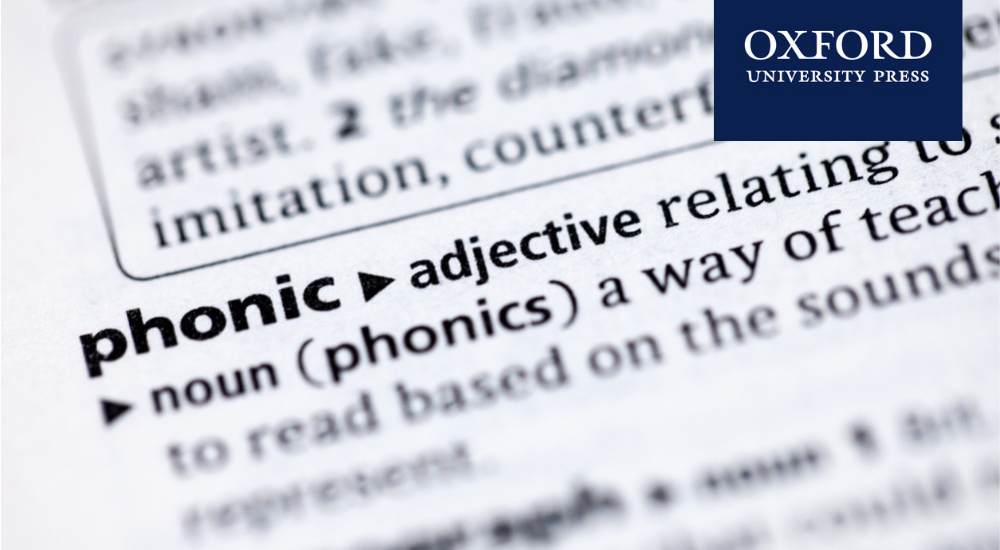
If I asked you what the hardest part of learning English was, how many of you would point out the relationship (or seeming lack of a relationship) between how English sounds and how it is written?
My social media feeds are full of jokes about English spelling, like the famous poem ‘The Chaos’ by G. Nolst Trenite, which uses rhymes to point out that
“Blood and flood are not like food,
Nor is mould like should and would.”
Ahead of my forthcoming webinar Fun with Phonics next month, let’s go back to basics with phonics and think about how it is relevant in the young learner’s classroom.
What is phonics?
English is not spelt phonetically so reading and spelling in English can be challenging even for native speakers. Phonics is a system that was developed to help native speaking children learn to read in English. It involves linking the 44 sounds of English (phonemes) to the possible ways they can be spelt (graphemes). There are three main types of phonics: Analytic, Embedded and Synthetic.
- Analytic phonics takes whole words and asks learners to analyse them. Students are taught to compare sound patterns, for example identifying what is the same about the words pet, purple and potato, or noticing the similarities between words with the same ending like book and cook.
- Embedded phonics teaches phonics as and when it is needed. For example, if a student is having particular difficulties with a new word. It is not a systematic approach, and students are only taught what is needed so not all phonics elements are covered.
- Synthetic phonics is the most widely used approach around the world. This is because it is the most effective. This method takes a systematic approach to phonics, teaching children to sound out words to ‘decode’ what they say, or blend sounds together to ‘encode’ them in their written form.
As Synthetic phonics is the most widely used, we will look at this further during the webinar.
Why does it matter to English language teachers?
As a native English speaker (and reader) I clearly remember receiving phonics instruction as I navigated English spelling. I remember working through levelled reading schemes in school, and reading with my Grandmother as she challenged me to find all the words in the newspaper with “oo” in them while we experimented with the sounds they make. More than 30 years on and phonics has become a buzzword in the English language classroom.
However, phonics doesn’t just help children to associate the sounds and spelling of English. Through focusing on the sounds of English, young learners can develop confidence when they tackle new words. It can also help them to improve their spoken and written English and develop their learner autonomy. We’ll be exploring this further in the webinar.
How can I teach phonics?
In 2018 there are plenty of great phonics-based reading schemes that can be used in our classrooms.
There are those such as Floppy’s Phonics which is designed for the first language English speakers, but which is increasingly used in the second language classroom. Then there are schemes such as Oxford Phonics World which is developed specifically for learners of English. Phonics can also be seen embedded in young learners’ coursebooks such as Family and Friends, where children learn phonics while they learn English.
Of course, having the right materials is only half of the battle. As with anything else in the classroom, success with phonics will also depend on how well you implement the ideas into your lessons.
Charlotte Rance is a freelance teacher trainer and educational consultant based in Brighton, UK. She has been working in the English Language Teaching industry for over a decade, and her key areas of interest are young learners and the use of stories and reading as a tool for language learning. Her main goal as a trainer is to provide practical advice and strategies that teachers can implement in their lessons.


[…] via Fun with Phonics | Charlotte Rance | OUP — Oxford University Press […]
Hi Charlotte,
Thanks so much for sharing that post with us. I am teaching my young learners using the Jolly Phonic (if ever you happen to know it), another synthetic phonics program. And I can say that this is very helpful for teaching native and non-native English speakers. I will try to register for your webinar. We keep in touch
Good ideas here, can never have enough activities in your teacher toolkit! I am a teacher, albeit on a year off!, and will be using this when i return to the classroom. If your interested i have a few games on my website ( free to download!! as well as some apps) although not going to change the world they work prettty well.
Also if you havent tried, there is an app called teacher your monster to read that is exceptional, (it is not mine i wish it was though)
Hi thanks for these tips. My students always encounter spelling problems. These will help a lot. Thanks for sharing your knowledge with us.